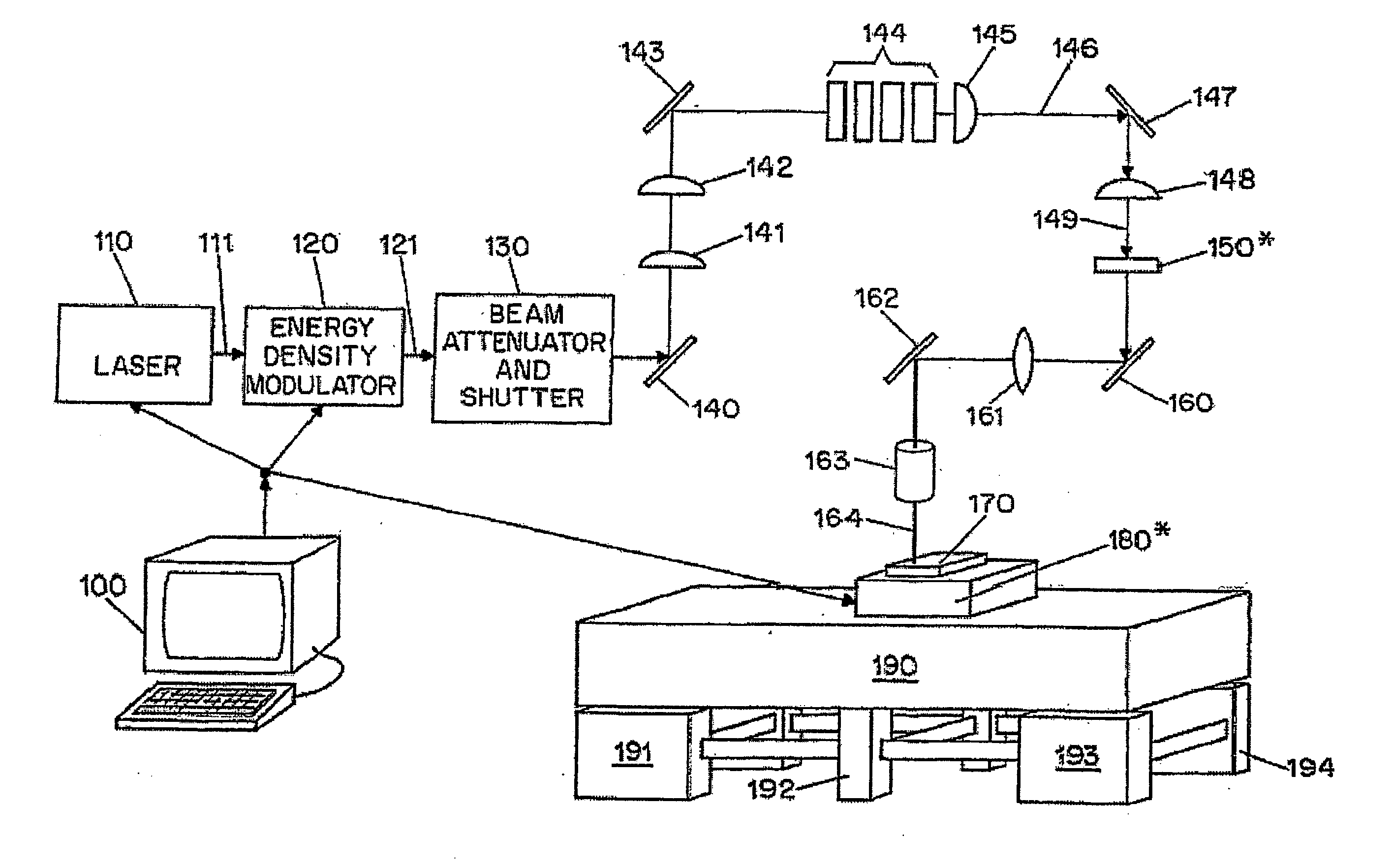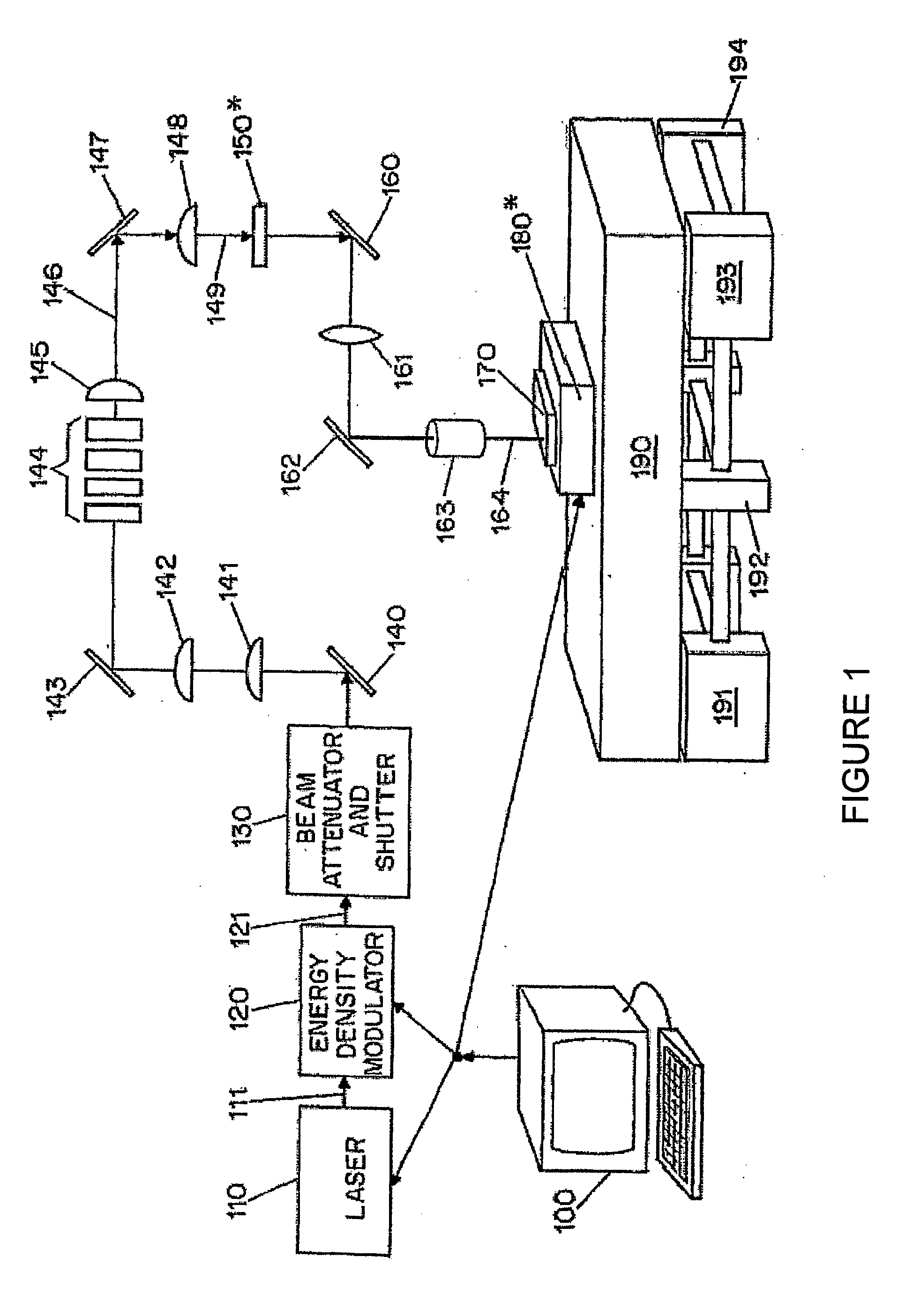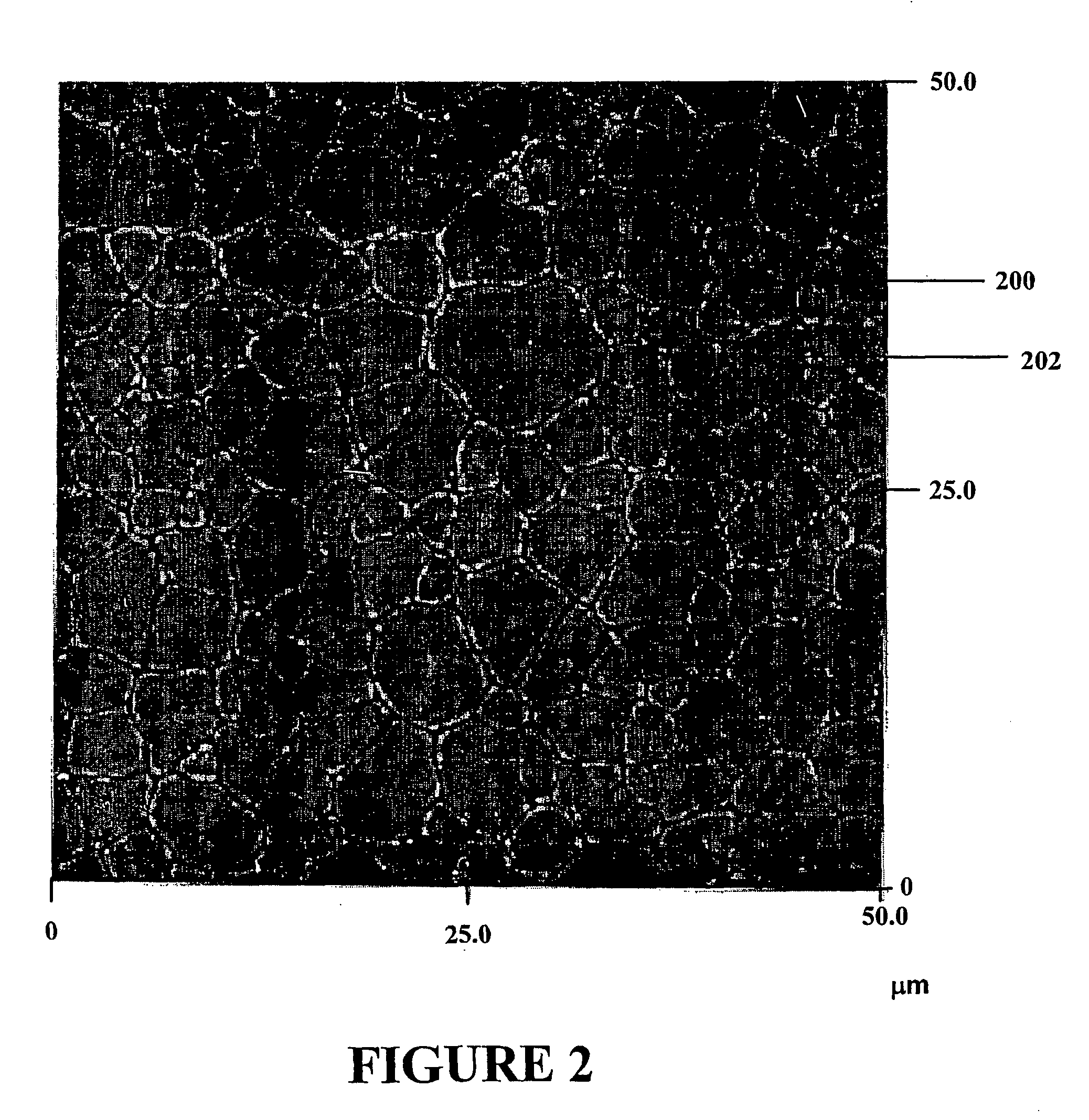Method and system for providing a thin film with a controlled crystal orientation using pulsed laser induced melting and nucleation-initiated crystallization
a technology of controlled crystal orientation and laser induced melting, applied in the direction of crystal growth process, polycrystalline material growth, manufacturing tools, etc., can solve the problems of reducing the electro-migration rate, increasing the electro-migration rate, and reducing the production efficiency of metal thin films
- Summary
- Abstract
- Description
- Claims
- Application Information
AI Technical Summary
Benefits of technology
Problems solved by technology
Method used
Image
Examples
Embodiment Construction
[0023] In one exemplary embodiment of the present invention, a uniform crystalline orientation of at least one section of a metal thin film may be obtained using the sequential lateral solidification process. Therefore, in order to fully understand the present invention, the sequential lateral solidification process is further described. As disclosed in aforementioned patent applications, the sequential lateral solidification (“SLS ”) process is a technique for producing large grained thin films through small-scale unidirectional translation of a sample between sequential pulses emitted by an excimer laser. As each pulse is absorbed by the sample, a small area of the sample is caused to melt completely, and then resolidify laterally into a crystal region produced by the preceding pulses of a pulse set. It should be understood that various systems according to the present invention may be utilized to generate, nucleate, solidify and crystallize one or more areas on the thin film (e.g...
PUM
| Property | Measurement | Unit |
|---|---|---|
| thickness | aaaaa | aaaaa |
| shape | aaaaa | aaaaa |
| temperature | aaaaa | aaaaa |
Abstract
Description
Claims
Application Information
 Login to View More
Login to View More - R&D
- Intellectual Property
- Life Sciences
- Materials
- Tech Scout
- Unparalleled Data Quality
- Higher Quality Content
- 60% Fewer Hallucinations
Browse by: Latest US Patents, China's latest patents, Technical Efficacy Thesaurus, Application Domain, Technology Topic, Popular Technical Reports.
© 2025 PatSnap. All rights reserved.Legal|Privacy policy|Modern Slavery Act Transparency Statement|Sitemap|About US| Contact US: help@patsnap.com



